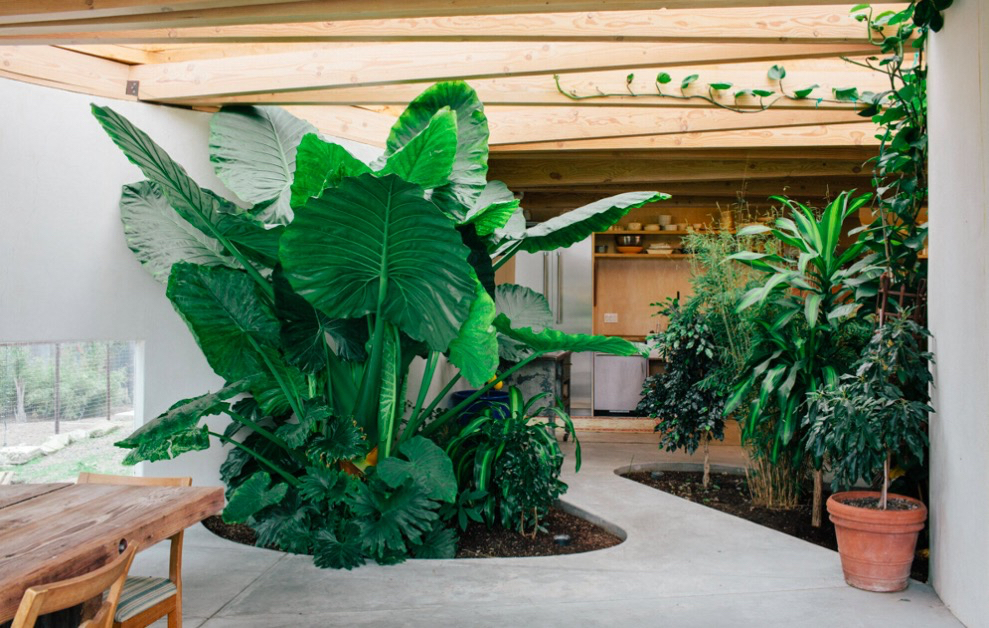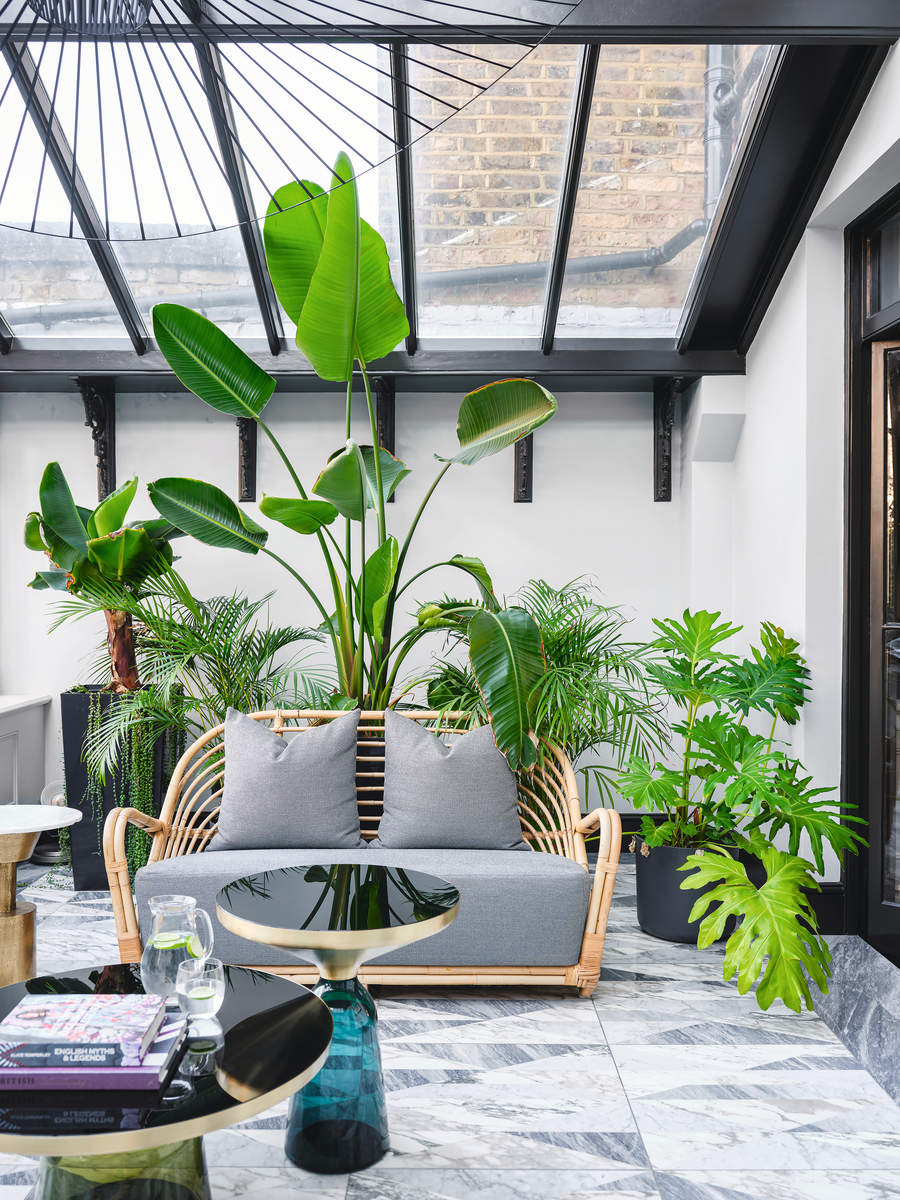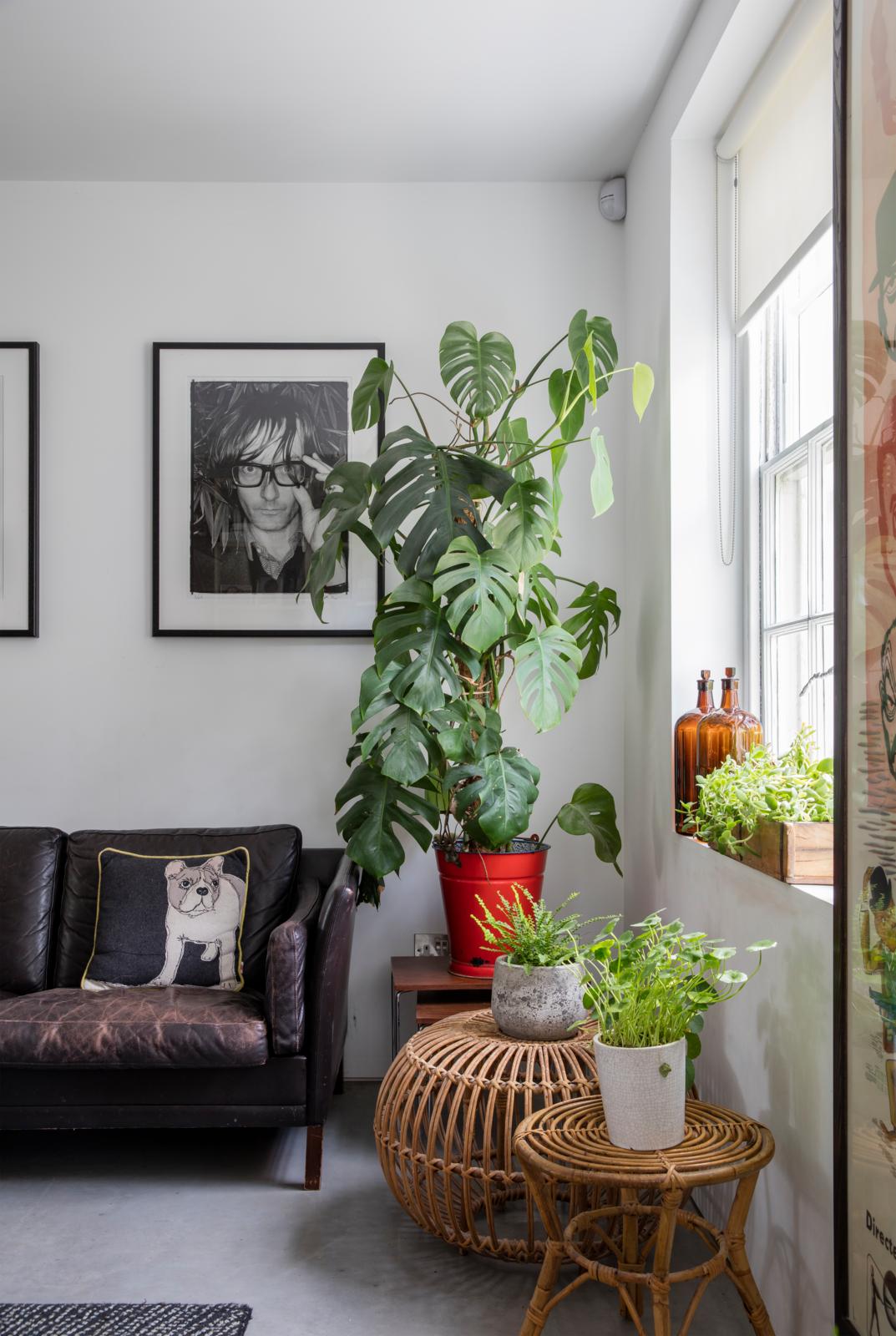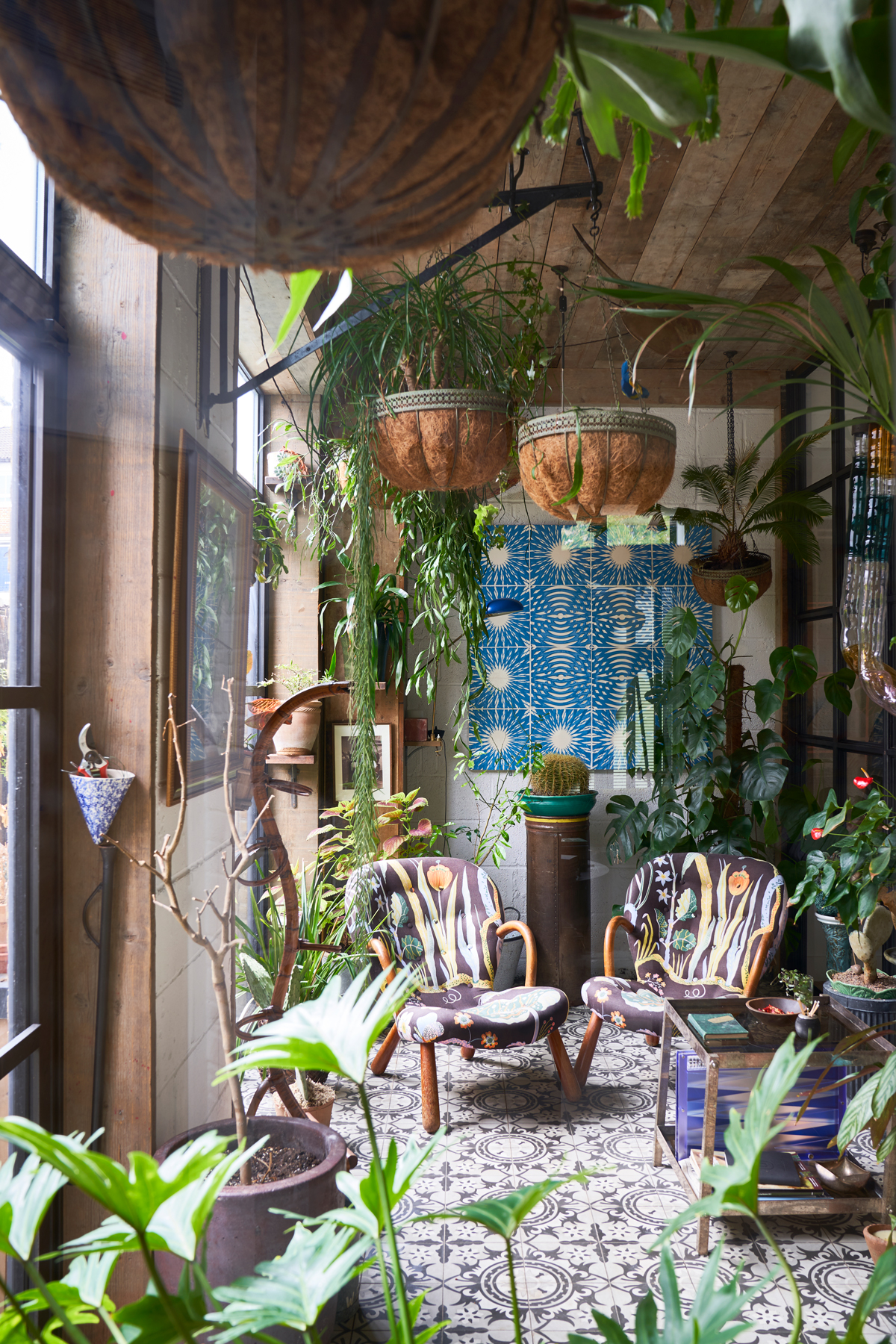
Gardening has never been more popular. Our urge to cultivate and grow and care for plants has rocketed in recent years – mostly due to the months spent in various lockdowns has given so many of us a newfound passion for greenery. We all knew of the benefits of plants and gardening, but we definitely put them to the test over the pandemic and truly saw the relaxing and rewarding effects on our well-being.
And with this growing love of gardening, has come a huge trend for indoor gardens too. Those of us who don't have an outdoor space to tend to can be just as green-fingered and create beautiful, luscious displays in the rooms of our homes. An indoor garden, much like its outdoor equivalent, can take many forms – a jungle-like collection of house plants, a vertical green wall, a handy herb garden. There are some techy approaches too, like soilless setups and designs that use LED technology to provide all the nutrients needed by your indoor garden.
Whatever approach suits your home and style, starting an indoor garden needn't be complicated and anyone can get started and enjoy all those fulfilling feels. We spoke with house plants experts and indoor gardeners to find out their top tips on starting (and maintaining) an indoor garden...
Everything you need to start a thriving indoor garden
What do you need to start an indoor garden to ensure it thrives in the conditions of your home? We asked the experts for their advice.
1. Light

This is the main things you REALLY need when starting an indoor garden. Light is essential for plants, and the first thing to consider when choosing the place for your indoor garden.
'Observe the light in the space where you want the plant to live as it is key to a successful indoor garden and getting it right makes care so much easier,' explains Dom Butler, founder of Plant Drop. 'The biggest mistake is putting a plant too far from a natural light source like a window or choosing a plant that doesn't like the light you have. It is important to work out what facing your window is as south-facing is direct while west-facing light is softer.'
This is why knowing that you can turn your windowsill into an indoor garden is a vital part of the puzzle - it's going to be one of the best spots in the house.
That said, some plants prefer indirect bright light, and so should be close to (not on) a window, while a plant that likes medium to low light can be further away from a window. Seasons also play a part as there is less light in winter plants can be brought closer to a window while in summer they might need to move back from a south-facing window.'
'Light is probably the most important factor, so it really helps to understand the amount of natural light the different areas of your home receives, to understand which plants will work well,' adds Jemma.
'Most plants will be described as needing either direct light, indirect light or low light. To explain this, direct light is in a bright window where the sun's rays touch the plant (think cacti and succulents that grow naturally in sunny desert areas). Indirect light is further back from the light source, still in a bright situation but where no sunlight actually touches the plant as this can cause leaves to burn. And low light is even further back from the light source, but note this is not ‘no light’.'
'Don't believe the lie of "thrives in low light" plants - they merely die slower and less noticeably than other plants!' says Darryl Cheng, author of 'The New Plant Parent' and creator of House Plant Journal. 'If you want long-term enjoyment of an indoor garden, make sure you don't buy more plants than you have windows. If you're willing to use grow lights, you can populate a windowless corner with many tropical foliage plants (traditional "houseplants"), since they will grow well under a modestly powered grow light.'
This grow light in on sale at Amazon and means you can turn any corner into a garden.
2. The right temperature

And as well as looking at your light set up, consider the room you plan to grow your indoor garden in. Think about the temperature the room gets to, does that temperature fluctuate? Is the room susceptible to moisture? The conditions of your room will effect what plants will thrive in the space. If you look into how to get the humidity level right for houseplants, it can be fairly straightforward to acheive.
'Certain plants like lots of moisture such as Areca palms and Boston ferns so these are so well suited to bathrooms and kitchens where there is lots of moisture in the air. While conservatories and orangeries are very bright, so need sun lovers like Schefflera and Bucida. The other thing to consider with looking at the room you have in mind has radiators and draughts, these can stress plants so it is always good to keep them away from them,' explains Dom.
'The majority of indoor plants thrive in room temperatures, typically between 60°F (15°C) and 75°F (24°C) during the day. So they can be very accessible to all people, and plant parenthood is more about practice and patience - no one is born with a "green thumb"!' adds Beth Chapman, founder of Leaf Envy. 'However, it's important to note that abrupt temperature fluctuations, drafts, or prolonged exposure to extreme temperatures (hot or cold) can stress or harm houseplants. Also, different plants may have specific humidity needs, so having a mister in your toolkit is always handy.'
3. Self-awareness
Before buying even low maintenance plants for indoor gardening with, think about how much time and effort you are going to be able to put in long term. Don't set yourself up for failure. Anyone can have a thriving indoor garden no matter how green-fingered you are, it's just about choosing plants that fit with your lifestyle.
'Ask yourself do you have time to water every week or are you more of a hands-off plant parent or perennial traveler who is never in? Some plants need a lot of care and are temperamental to little changes like fiddle trees, while others like euphorbia (cacti) can be left alone for weeks. It is really good to set out knowing how much you want to put into your indoor garden so you can get the most out of it, and it remains a joy rather than a burden,' explains Dom.
And remember spending time caring for plants is one of their huge benefits. So don't be put off by the maintenance. 'Once you have a good foundation of light and acquire suitable plants, care is simple and can even be therapeutic,' says Darryl. 'Appreciate your plants on a daily basis, which in turn allows you to see if any need watering, cleaning, or pest treatment. Determine when to water by feeling the soil - there are only three different cues to water: For cacti and succulents - water when the soil is completely dry. For most leafy tropical plants - water when the soil is about halfway dry. For most ferns (especially the maidenhair fern) or "moisture-loving" plants (like begonias and some calatheas) - water when the soil is just slightly dry as you are trying to keep the soil evenly moist. By using these watering strategies, I never have to "keep track" of watering – I just look/feel the soil.'
4. Hardy plants
If you are a house plant novice, be sure to pick the best house plants for beginners to give yourself the best start.
'If you're a beginner, choose hard-to-kill plants that enjoy similar conditions, like the snake plant or the ZZ plant. They'll thrive in most light conditions and won't mind if you forget to water them every now and then. If you'd love a living wall but can't quite justify the effort, mix and match different types of pothos. Their hanging vines will grow long and full, and you can easily rearrange them on a shelf to create different patterns or ombré effects. With small succulents and cacti, a windowsill garden is at your fingertips. These plants enjoy plenty of sunlight and infrequent watering,' suggests Freddie Blackett, founder of Patch Plants.
'Choose plants that are happy in most light conditions and don't mind if you forget to water them. Almost unkillable plants like the parlor palm, the corn plant and the peace lily come in plenty of sizes, so you can choose a plant that suits your space, whether it's an empty tabletop or spare corner.'
'Think about how much time you can also realistically spend nurturing your collection. If you are away travelling a lot, opt for hardy species like the Snake or ZZ Plant that can withstand neglect,' adds Beth. 'Many people start with the easy or hard-to-kill plants and scale up to more advanced species as they gain confidence. This is precisely what I did, and trust me; I still fail every so often. Plant parenthood is more about the experience of learning a new skill, taking on a hobby which is great for our mental well-being and using it as a time to switch off from our busy schedules.'
5. Contrasting plants

What takes an indoor garden from a collection of houseplants to a real display is to bring together different heights and textures to give that jungle-like look that has depth and interest. Consider how your plants will sit together. You want a mix of shapes and finishes just as you would when creating a display in your home.
'It all depends on the look you want to achieve, but if you’re looking to start a small but perfectly formed tropical collection then you'll need to know what plants are best for a lush indoor garden, like a parlor palm, the classic monstera, kentia palm, bird of paradise or even the asparagus fern to add a beautifully contrasting texture,' suggests Jo.
The aim is to create almost a block of greenery. You don't want to be able to clearly decipher each plant or make it too obvious where they are growing from. Disguise pots by starting with larger plants at the back of your display and use medium-sized and smaller plants to hide the base and create a lush-looking indoor garden. Plus grouping plants in this way can be beneficial to their health too.
6. Planters
Planters are of course a must for an indoor garden. They can really change the look of the display too, whether you are after a formal set up – something like a neat row of terracotta pots with indoor trees or something wilder that has different levels to it.
Planters can be an easy way to give your houseplants height too, and create that interest we were just talking of. Rather than investing in huge house plants, fake the look by using a plant stand. And use hanging plants and baskets to create levitating greenery which always looks impressive. Our edit of the current trending pots for indoor gardens will help you here.
7. Tools
A watering can is a must for any indoor garden. But there are a few other tools that can make plant parenting easier and will help your indoor garden thrive.
Jemma recommends, 'Mini scissors for trimming off any yellowing or brown leaves. Moisture meter and bamboo cloth which is great for some mindful plant care tasks; wiping leaves to keep them clear of dust is not only vital for a thriving plant but also a relaxing task. The moisture meter will help to take the guesswork out of when to water for beginners. And potting tarp – great for keeping any mess contained when potting up your plants, feeding, or general plant maintenance.'
'Along with a classic watering can, we’d highly recommend a mister. Most tropical plants are used to getting their moisture through the air, in the humid tropical environments they’re native to. So they’ll benefit from a regular misting!' adds Jo.
'My favorite tool is a 3-in-1 moisture meter; this handy device tells you how much moisture is in the soil, what the light is like in its' placement and can even tell you the Soils pH levels. I use it for all my plants weekly to triple-check if they need watering,' suggests Beth. 'I also have a glass mister, watering can, secateurs, bug control spray, plant food and a bag of peat-free potting mix to top up soil when needed.'
Essential indoor garden tools to buy now
What is an indoor garden?
'An indoor garden is essentially a curated cluster of indoor plants, usually grouped together to create a miniature garden! An indoor garden can be achieved on shelves, large planters or even simply through a room crammed full of plenty of potted plants,' explains Jo Lambell, founder of Beards & Daisies.
So really an indoor garden can be anything you make it. A selection of palms in your bathroom, a herb garden in your kitchen, a mini olive grove growing in your bedroom. Any collection of plants grown inside, we are calling an indoor garden.
Can you have an indoor garden with no gardening skills?
You don't need a lot of skill to be a succesful indoor gardener. 'And that’s what we think is so special about houseplants. All you really need is a small space near some natural light and access to water, to start a thriving plant collection,' says Jemma Charman, co-founder of Green Rooms Market.
Jo Lambell agrees that, 'of course, anyone can start an indoor garden - we strongly believe that plants are for everyone! No matter your home or level of experience, there’s a plant out there that suits your needs and your space.'







